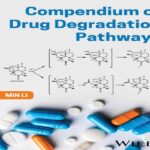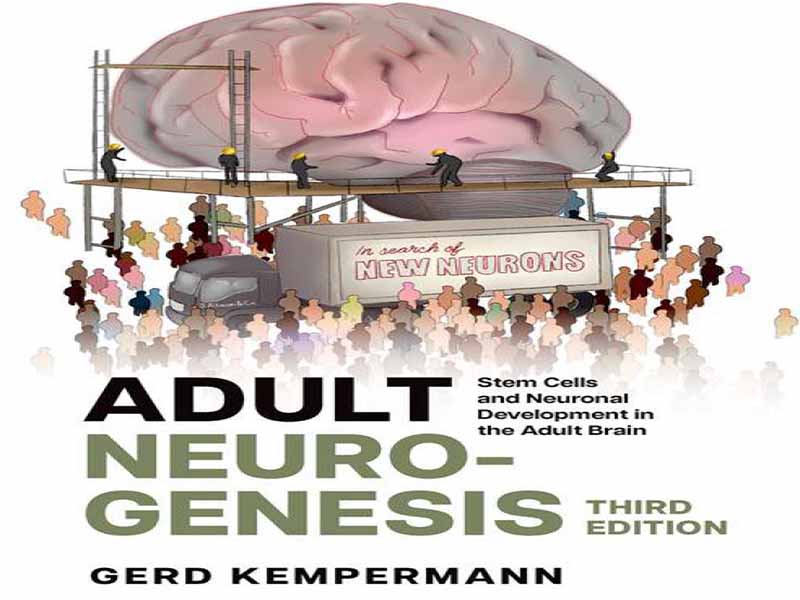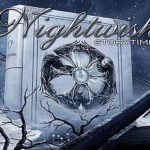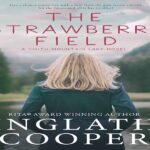- عنوان کتاب: Adult Neurogenesis -Stem Cells and Neuronal Development in the Adult Brain
- نویسنده: Gerd Kempermann
- حوزه: سلولهای بنیادی
- سال انتشار: 2025
- تعداد صفحه: 809
- زبان اصلی: انگلیسی
- نوع فایل: pdf
- حجم فایل: 14.4 مگابایت
نوروژنز بزرگسالان – یعنی تولید نورونهای جدید در مغز بزرگسالان – در شش دهه بین ۱۹۶۵ تا امروز، مراحل مختلف مطالعه و قدردانی را طی کرده است. نوروژنز بزرگسالان در ابتدا غیرممکن تلقی میشد، سپس به عنوان یک کنجکاوی، و بعدها به عنوان استثنایی بر قوانین ثابت دیگر، اما در نهایت، تقریباً در حدود سال ۲۰۰۰، به عنوان یک پدیده مهم و اساساً بیچون و چرا در نوروبیولوژی پستانداران پذیرفته شد. از آن زمان تاکنون، بحثهایی در مورد ارتباط آن با مغز انسان هر از گاهی مطرح شده است، اما به طور کلی، این سؤالات حل شدهاند. نوروژنز بزرگسالان بسیار جذاب است زیرا دیدگاه ما را نسبت به مغز تغییر میدهد. نورونهای جدید، هر چقدر هم که نادر باشند، به خصوص در هیپوکامپ بزرگسالان، ممکن است عملکرد کاملاً ضروری را ارائه دهند. برخلاف تصور رایج، در هیپوکامپ تکاملی به سمت نوروژنز بزرگسالان رخ داده است، نه دور شدن از آن. مغز پستانداران بزرگسال میتواند نوروژنز بزرگسالان را درست مانند مارمولکها تجربه کند، اما از آن برای اهداف بسیار پیچیده اما حیاتی استفاده میکنند که هیچ مارمولکی – با هدف جناس – نمیتواند به آن فکر کند. نوروژنز در مغز پستانداران بالغ، نیاکانزایی نیست. در طول تقریباً ۶۰ سال گذشته، حوزه ما مدتهاست که دوران طفولیت خود را پشت سر گذاشته، دورهای را که فقط «موضوع روز» بود، پشت سر گذاشته و خود را به عنوان یک حوزه مهم نوروبیولوژی تثبیت کرده است که همچنان تأثیر فزایندهای بر مفاهیم عمومی دارد. یک مثال بارز، بحث در مورد چگونگی آسیب بیماری آلزایمر به هیپوکامپ است: در اینجا، کاهش نوروژنز بزرگسالان به جنبه مهمی از درک زوال عقل تبدیل شده است. اما، به طور کلی، باید این سؤال مطرح شود: آیا میتوانیم پایههای سلولی «یادگیری» را بدون در نظر گرفتن نوروژنز بزرگسالان درک کنیم؟ آیا میتوانیم انعطافپذیری و انعطافپذیری وابسته به فعالیت را در طول عمر درک کنیم؟ من متقاعد شدهام که هر کسی که میخواهد مغز ما و نحوه عملکرد آن را درک کند، نمیتواند این واقعیت را نادیده بگیرد که نورونهای جدید حتی در بزرگسالی نیز وجود دارند. این کتاب برای معرفی این حوزه هیجانانگیز به طیف وسیعی از خوانندگان در نظر گرفته شده است. از زمان چاپ اول در سال ۲۰۰۶، هزاران نشریه جدید منتشر شده است و این حوزه همچنان در حال گسترش است. در حالی که در ویرایش اول هدف و آرزوی من پوشش اساسی تمام انتشارات موجود بود و کم و بیش در این کار موفق بودم، برای ویرایش سوم، حتی از راه دور هم جامع بودن کاملاً غیرممکن شده است. با توجه به هدف ارائه یک مقدمه جامع به جای یک دایره المعارف، ناشر و من تصمیم گرفتیم تعداد منابع را در بسیاری از بخشهای کتاب کاهش دهیم. در بیشتر موارد، به ویژه در فصلهای اولیه و عمومیتر، ویرایش سوم بیشتر به یک کتاب درسی مقدماتی (که هنوز هم دارای منابع مستقیم زیادی در مورد نوروژنز بزرگسالان است) تبدیل شده است تا یک کتاب راهنمای جامع که بتواند آرزوی پوشش واقعبینانه همه چیز را حفظ کند. برای هر خوانندهای که به دنبال مقدمهای بر حوزه نوروژنز بزرگسالان است، چنین جاهطلبی فراگیری در هر صورت نتیجه معکوس خواهد داشت و کاملاً گیجکننده خواهد بود. انبوه مقالات و جزئیات، اثر را غیرقابل خواندن میکند. اینترنت و پایگاههای دادهای مانند PubMed، با ویژگیهای جستجوی پیشرفته و الگوریتمهای انجمنی، از جمله موتورهای مبتنی بر هوش مصنوعی که مقالات مرتبط را پیشنهاد میدهند، ردیابی جدیدترین مطالب اضافه شده به یک خط استدلال یا بینش را آسان میکنند. باید به خواننده واگذار شود که برای یافتن مطالعات اصلی مرتبط، چنین جستجوهایی را در متون آغاز کند. گام کاهش منابع و حتی مصنوعیتر شدن نسبت به قبل، قطعاً خوانایی را افزایش داده و کتاب را سادهتر کرده است، اما بدیهی است که به قیمت گاهی اوقات خودسرانه به نظر رسیدن و مستعدتر شدن به سوگیری ادراکی یا واقعی تمام میشود. در فصلهای مقدماتی عمومی، تأکید واضحی بر انتشاراتی شده است که بلافاصله نکته مطرح شده را به نوروژنز بزرگسالان مرتبط میکنند. در فصلهایی که بر اساس متون مربوط به خود نوروژنز بزرگسالان است، به ویژه فصلهای مربوط به تنظیم (فصل 9)، عملکرد (فصل 10) و پزشکی (فصل 12)، سعی کردهام به انتشارات کلیدی که برای اولین بار یک مفهوم را معرفی کردهاند و همچنین مقالات مروری که ممکن است خواننده را به پوشش عمیقتر موضوع هدایت کنند، اشاره کنم. در اینجا منابع بیشتری را خواهید یافت که به عمق این حوزه منجر میشوند. به ویژه تمام تلاشها برای فهرست کردن تمام منابع کلیدی انجام شده است که نقطه ورود بسیار خوبی را به سوال مورد علاقه و هشدار به مواردی که ممکن است یافتن آنها دشوار باشد، فراهم میکند. با این محدودیت خودخواسته اما امیدوارم موجه در تعداد کلی منابع، قطعاً قصد من انکار اعتبار مناسب برای محققانی که کار مورد بررسی من را انجام دادهاند، نبوده است. بنابراین، در اینجا از همه همکارانی که ممکن است احساس کنند کارشان به طور مناسب مورد تقدیر قرار نگرفته است، عذرخواهی میکنم. ایجاد تعادل مناسب بین منابع بسیار زیاد و بسیار کم، همیشه یک چالش کلی در کتابهای درسی خواهد بود و من…
Adult neurogenesis— that is, the generation of new neurons in the adult brain— has progressed through various stages of study and appreciation in the six decades between 1965 and today. Adult neurogenesis was initially regarded as impossible, then as a curiosity, later as an exception to otherwise steadfast rules, but finally, approximately around 2000, it became accepted as an important and essentially undisputed phenomenon of mammalian neurobiology. Some debate about its relevance for the human brain has since flickered from time to time, but, by and large, these questions have been settled. Adult neurogenesis is so fascinating because it changes the view of our brain. Rare as new neurons might be, especially in the adult hippocampus they might provide absolutely essential function. Contrary to common belief, in the hippocampus there occurred an evolution toward adult neurogenesis rather than away from it. Adult mammalian brains can experience adult neurogenesis just as lizards do but they use it for highly sophisticated yet critical purposes that no lizard could— pun intended— think of. Neurogenesis in the adult mammalian brain is no atavism. Over the past roughly 60 years, our field has long left its infancy, has passed the period of being just the “flavor of the month,” and has established itself as an important domain of neurobiology that continues to exert increasing influence on general concepts. A prime example is the discussion about how Alzheimer disease damages the hippocampus: here, the decline in adult neurogenesis has become an important facet of understanding dementia. But, generally speaking, the question must be raised: Could we ever understand the cellular bases of “learning” without including adult neurogenesis? Could we understand activity- dependent plasticity and resilience across the life span? I am convinced that whoever wants to understand our brain and how it works cannot ignore the fact that new neurons are present even in adulthood. This book is meant to introduce this exciting field to a broad spectrum of readers. Since the first edition in 2006, thousands of new publications have been published and the field continues to expand. While for the first edition I had the aim and ambition to essentially cover all available publications and was more or less successful in doing so, for this third edition it has become completely impossible to be even remotely inclusive. Given the aim to provide a one- stop introduction rather than an encyclopedia, the publisher and myself have decided to reduce the number of references in many parts of the book. For the most part, especially in the early, more general, chapters, the third edition has become more of an introductory textbook (still with many direct references regarding adult neurogenesis) rather than the comprehensive handbook that could maintain the ambition to realistically cover everything. For any reader seeking an introduction to the field of adult neurogenesis, such all- encompassing ambition would be counterproductive and utterly confusing anyway. The sheer mass of papers and details would make the work unreadable. The internet and databases like PubMed, with their advanced search features and associative algorithms, including artificial intelligence- powered engines that suggest relevant papers, make it easy to track down the newest additions to a line of argument or insight. It must be left to the reader to embark on such literature searches to find the relevant original studies. The step to reduce references and become even more synthetic than before has certainly increased readability and streamlined the book but obviously comes at the price of occasionally appearing arbitrary and being more prone to perceived or actual bias. In the general introductory chapters, a clear emphasis has been placed on publications that immediately relate the point being made to adult neurogenesis. In the chapters based on the literature on adult neurogenesis itself, especially those on regulation (Chapter 9), function (Chapter 10), and medicine (Chapter 12), I have tried to mention the key publications that have first introduced a concept as well as review articles that might guide the reader to a more in- depth coverage of the topic. Here you will find more references that lead into the depth of the field. All attempts have especially been made to list all key references that allow a very good entry point into the question of interest and alert to those that might be rather difficult to find. With this self- imposed but hopefully well- justified limitation in the overall number of references, it has certainly not been my intention to deny appropriate credit to the researchers who did the work I am reviewing. I therefore apologize here to all colleagues who might feel that their work has not been appropriately acknowledged. To strike a good balance between too many and too few references will always remain a general challenge of textbooks, and it becomes even more challenging in times of exploding numbers of potentially relevant publications. I am very happy that Oxford University Press and editor Craig Panner still believe and invest in a book like this. For some people— who will, however, neither read this preface nor the text that follows anyway— a book is something that has fallen out of time. Pessimists might also feel that a book is wasted time on the part of the author. Books are hardly ever cited and their “impact,” as assessed by the common bibliometric indicators, remains unestimated. The (otherwise laudable) move toward open access publishing and wiki- like knowledge bases and structures on the internet seems to increasingly questions the value of any book. Erroneously so, I am convinced. While from a “post- book era” perspective I might possibly have invested my time more wisely than into the next round of this endeavor, this book remains one of my dearest and most important projects and fills me with pride and gratefulness. This is true especially when I hear how the past editions made useful contributions to many bachelor, master and PhD theses around the globe and is considered by many a “bible” of our field. Feedback to the previous editions has been overwhelmingly positive and my (and the publisher’s) impression is that there is still a need and a market for this book. In fact, I believe, there might be more need today than ever. Try to learn about adult neurogenesis through Google alone and you will see what I mean! There is no common ground in web- based knowledge, and any topic can quickly become fuzzy. PubMed and many scholarly institutions, including the scientific journals, serve as filters and brokers of associations. But they never provide synthesis and abstraction. And review articles, while important to coalesce knowledge for particular questions, cannot cover an entire field in sufficient depth and with all the necessary cross- references that enable broad understanding.
این کتاب را میتوانید از لینک زیر بصورت رایگان دانلود کنید:
Download: Adult Neurogenesis




































نظرات کاربران